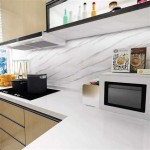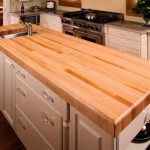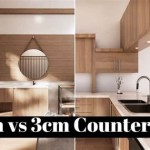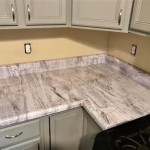The Practicality and Aesthetics of Countertop Waste Bins With Lids
The management of waste is a fundamental aspect of maintaining cleanliness and hygiene in both residential and commercial settings. While larger waste receptacles handle the bulk of refuse, countertop waste bins with lids offer a convenient and efficient solution for managing smaller, localized waste streams, particularly in kitchens, bathrooms, and office spaces. These compact bins provide a discreet and accessible means of disposing of food scraps, wrappers, cotton swabs, and other small items, preventing them from accumulating on surfaces and contributing to clutter and potential odors.
The inclusion of a lid is a critical feature that distinguishes countertop waste bins from open-top containers. Lids serve multiple important functions. They effectively contain odors, preventing unpleasant smells from permeating the surrounding area. They also offer a visual barrier, concealing the contents of the bin and promoting a more aesthetically pleasing environment. Furthermore, lids can help to deter pests, such as insects, from accessing the waste and potentially spreading germs or creating unsanitary conditions. The specific type of lid mechanism – swing, push, flip, or removable – can influence the ease of use and the overall effectiveness of the bin in containing odors and preventing spills.
The availability of countertop waste bins with lids in a diverse range of materials, sizes, and designs allows consumers to select options that seamlessly integrate with their existing décor and meet their specific functional needs. From sleek stainless steel models to colorful plastic bins and elegant ceramic containers, there is a style to suit virtually any aesthetic preference. The size of the bin should be carefully considered based on the typical volume of waste generated in the designated area. A bin that is too small will require frequent emptying, while a bin that is too large may take up unnecessary space and become a breeding ground for odors.
Key Point 1: Hygienic Waste Containment and Odor Control
The primary advantage of using a countertop waste bin with a lid lies in its ability to promote hygiene and control odors. The lid acts as a barrier, preventing the escape of unpleasant smells associated with decomposing organic waste. This is particularly important in kitchens, where food scraps and other waste materials can quickly generate strong and offensive odors. By containing these odors at their source, the waste bin helps to maintain a more pleasant and sanitary environment. Furthermore, the lid helps to prevent the spread of bacteria and other microorganisms that may be present in the waste. This is crucial for minimizing the risk of contamination and promoting overall health and well-being.
The material used in the construction of the waste bin also plays a significant role in its hygienic properties. Stainless steel, for example, is a non-porous material that is resistant to bacteria and easy to clean. This makes it an ideal choice for kitchens and bathrooms, where hygiene is of paramount importance. Plastic bins, on the other hand, may be more susceptible to staining and odor absorption, but they are often more affordable and available in a wider range of colors and designs. Regular cleaning and disinfection of the waste bin, regardless of the material, is essential for maintaining its hygienic qualities and preventing the buildup of bacteria and odors.
The design of the lid can also influence its effectiveness in containing odors and preventing spills. A tightly fitting lid, such as a snap-on lid or a spring-loaded lid, provides a more secure seal and is less likely to allow odors to escape or spills to occur. Swing lids and push lids offer convenience and ease of use, but they may not provide as tight a seal as other types of lids. The choice of lid design should be based on the specific needs and preferences of the user, as well as the type of waste that will be disposed of in the bin.
Key Point 2: Aesthetics and Integration With Interior Design
While functionality is a primary consideration when selecting a countertop waste bin, aesthetics also play an important role. A well-designed waste bin can seamlessly integrate with the existing décor of a room, enhancing its overall appearance and creating a more cohesive and visually appealing space. Countertop waste bins with lids are available in a wide range of styles, colors, and materials, allowing consumers to choose options that complement their personal tastes and the design of their homes or offices.
Stainless steel waste bins offer a sleek and modern look that is well-suited to contemporary kitchens and bathrooms. Their clean lines and minimalist design make them a versatile choice that can easily blend with a variety of décor styles. Plastic bins, on the other hand, are available in a wider range of colors and patterns, allowing for more creative expression and personalization. They can be used to add a pop of color to a neutral space or to coordinate with existing color schemes. Ceramic waste bins offer a more traditional and elegant look, and they can be particularly well-suited to bathrooms and powder rooms.
The size and shape of the waste bin should also be considered in relation to the surrounding space. A small, compact bin may be ideal for a small bathroom or office desk, while a larger bin may be more appropriate for a busy kitchen. The shape of the bin can also influence its visual impact. Round bins tend to have a softer and more organic look, while square or rectangular bins offer a more structured and geometric appearance. Ultimately, the choice of waste bin should be based on a careful consideration of both its functional and aesthetic qualities.
Key Point 3: Versatility and Convenience in Various Settings
Countertop waste bins with lids are versatile and convenient tools that can be used in a variety of settings to manage small waste streams effectively. Their compact size and portability make them ideal for use in kitchens, bathrooms, offices, bedrooms, and even cars. They provide a convenient and accessible means of disposing of a wide range of waste materials, from food scraps and wrappers to cotton swabs and tissues. This versatility makes them a valuable addition to any home or workplace.
In the kitchen, countertop waste bins are particularly useful for collecting food scraps and other organic waste. They can be placed near the sink or countertop to provide a convenient place to dispose of vegetable peelings, eggshells, coffee grounds, and other food-related waste. This helps to keep the countertops clean and free of clutter, and it also makes it easier to compost food waste or dispose of it properly. Many countertop waste bins are also dishwasher-safe, making them easy to clean and maintain.
In the bathroom, countertop waste bins are ideal for disposing of cotton swabs, tissues, dental floss, and other personal care items. They can be placed on the countertop or under the sink to provide a discreet and convenient place to dispose of these items. The lid helps to contain odors and prevent the spread of germs, making the bathroom a more sanitary and pleasant space. Similarly, in an office setting, these bins are useful for disposing of paper scraps, wrappers, and other small items generated throughout the workday. They can be placed on desks or near printers to provide a convenient and accessible waste disposal solution.
The ease of emptying and cleaning countertop waste bins is a significant factor contributing to their convenience. Removable inner buckets or liners simplify the process of disposing of the collected waste, reducing the likelihood of spills and messes. The materials used in the construction of the bins, such as stainless steel or durable plastics, are typically easy to wipe clean with a damp cloth or disinfectant wipe, ensuring that the bins remain hygienic and odor-free. The compact size of these bins also makes them easy to maneuver and store, further enhancing their practicality.
In conclusion, countertop waste bins with lids represent a practical and aesthetically pleasing solution for managing small, localized waste streams in a variety of settings. Their ability to contain odors, promote hygiene, and seamlessly integrate with interior design makes them a valuable addition to any home or workplace. By carefully considering the material, size, design, and lid mechanism, consumers can select a waste bin that meets their specific needs and preferences, contributing to a cleaner, more organized, and more aesthetically pleasing environment.

Round Garbage Can Stainless Steel Flush Recessed Kitchen Countertop Bin With Balance Swing Lid For Easy Waste Disposal From Bian10 19 95 Dhgate Com

Compost Bin For Kitchen Countertop Or Under Sink Trash Can With Lid Small Hanging Waste Bathroom Bedroom 29 51626cm Grey

Garbage Bin Waste Basket Countertop Household Press With Lid Mercadolivre

Countertop Trash Bin Bio Boy 4 2l Lcc

Yoneston 2 4 Gallons Hanging Small Trash Can With Lid Pack Kitchen Compost Bin For Counter Top Or Under Sink Mountable Indoor Bucket White Wal Com

Garbage Bin For Kitchen Cabinet Stainless Steel Swing Lid Trash Can Balance Cover Countertop Waste Container Silver Finish From Bong10 26 42 Dhgate Com

Washroom Accessories Sus304 Stainless Steel Trash Bin Flip Lid Waste Counter Top Cover Countertop And Made In China Com

Stainless Steel Bin 8l

Trash Can By Hafele Worktop With Lid Advance Design Technologies Inc

Stainless Steel Cupboard Waste Rubbish Bin With Lid 15l Left Or Right








